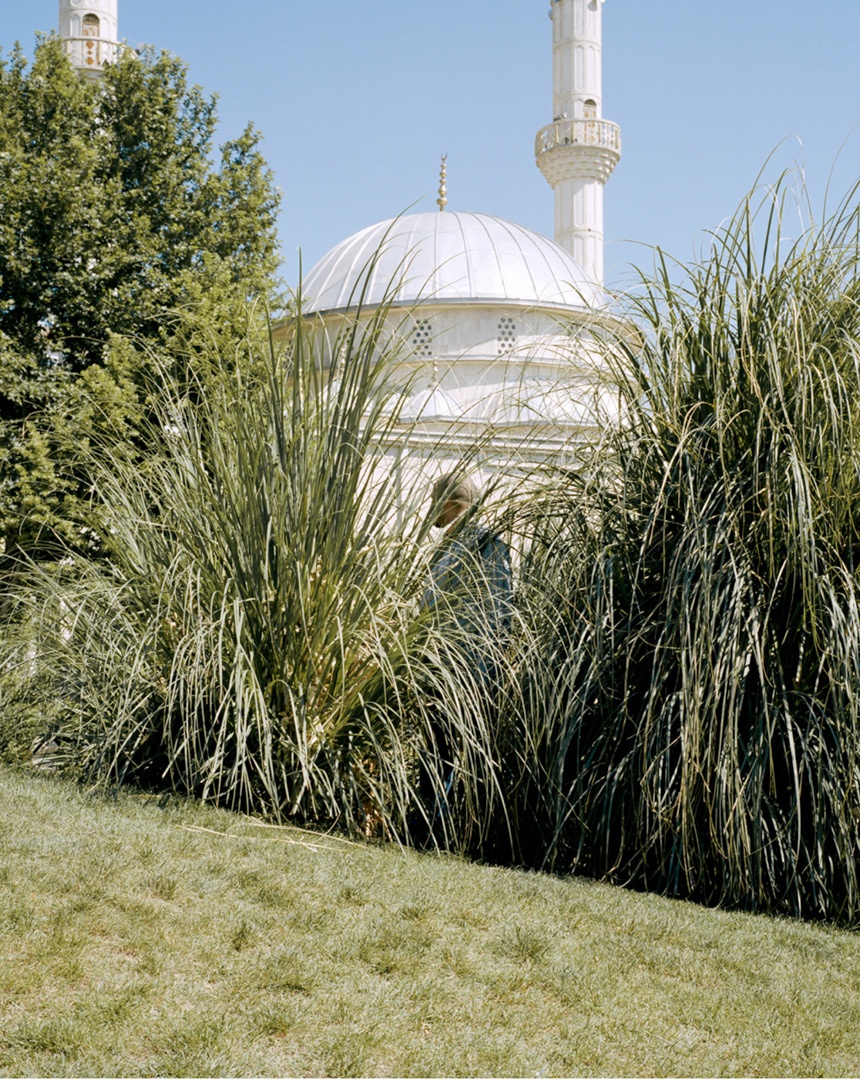
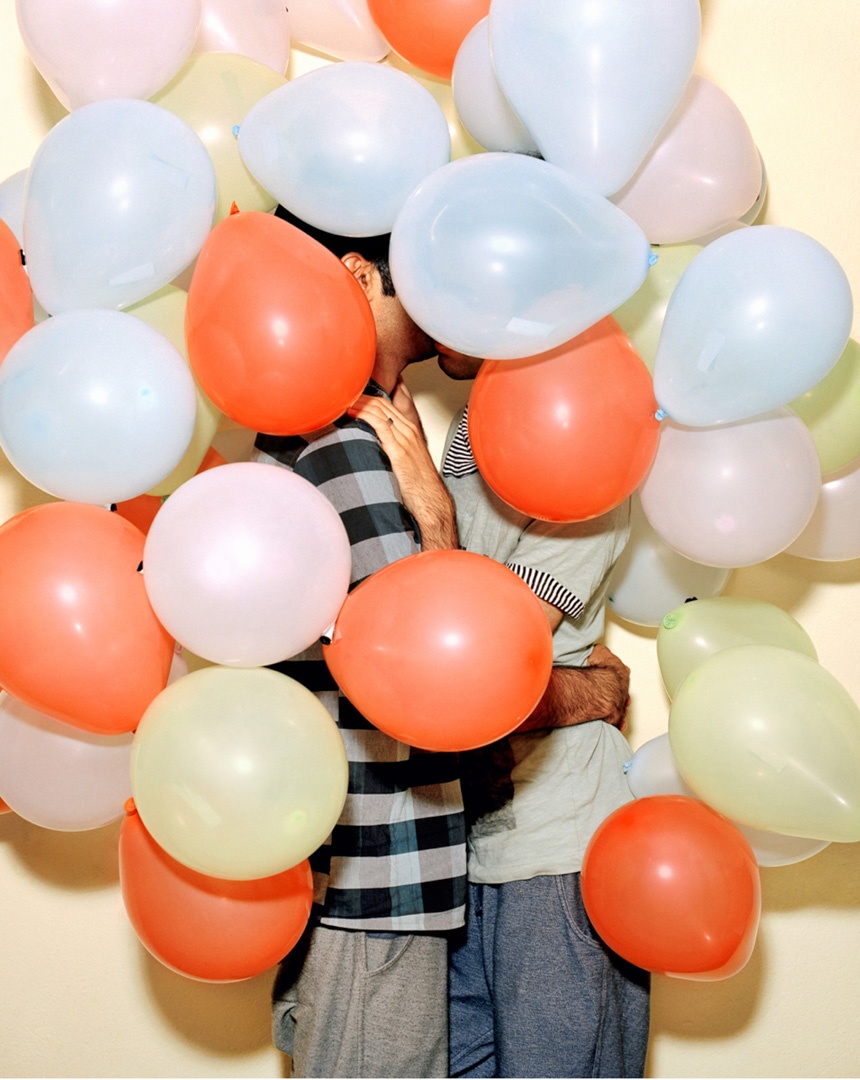
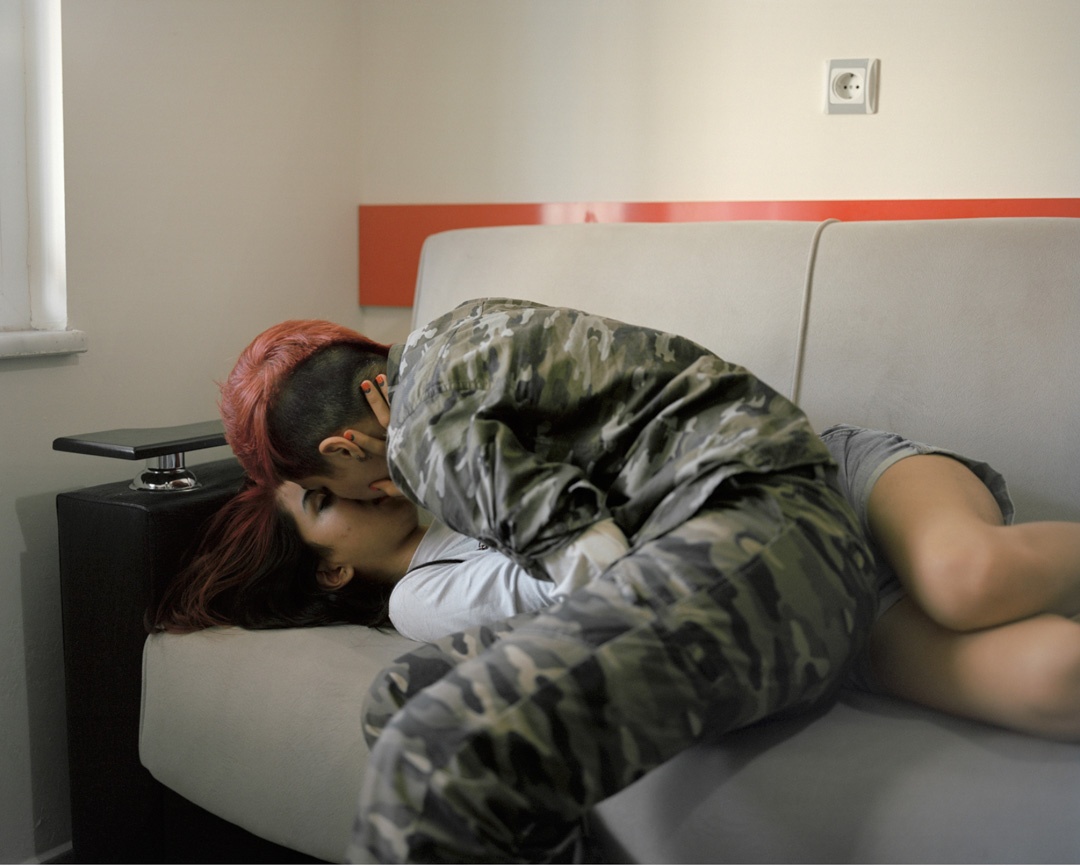
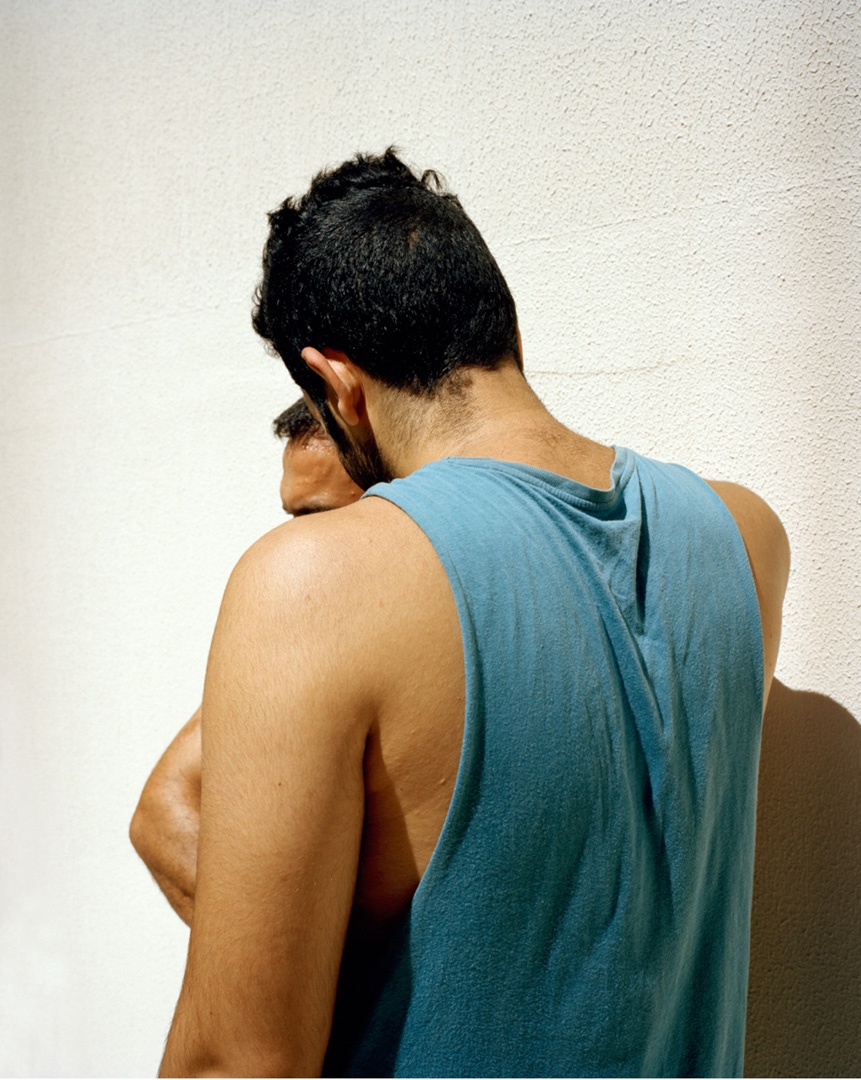
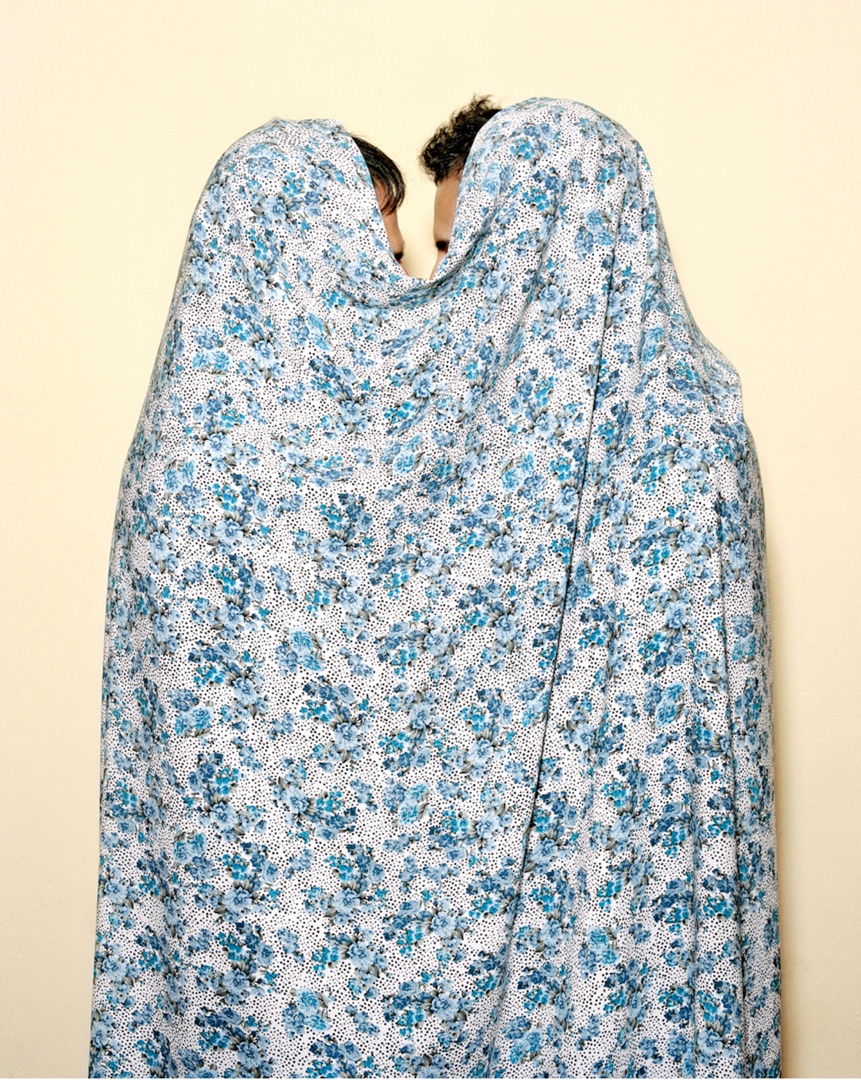
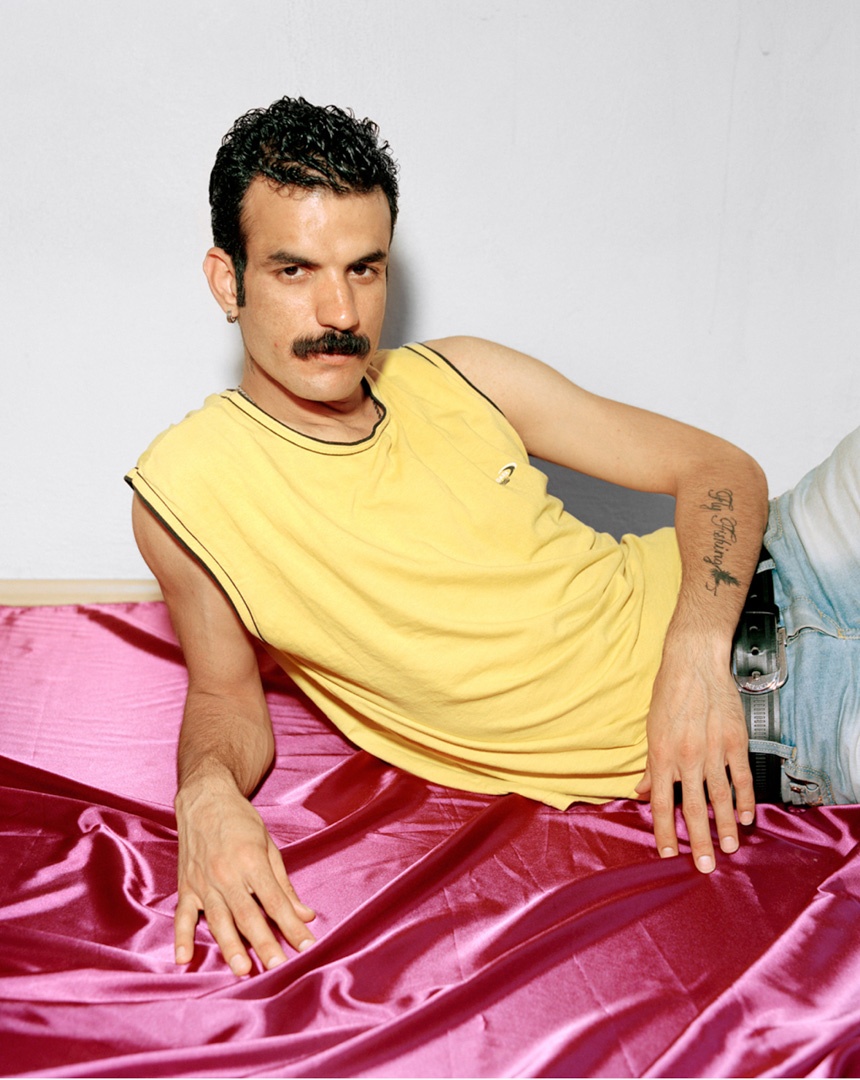
SHREYA DE SOUZA
There Are Not Homosexuals In Iran
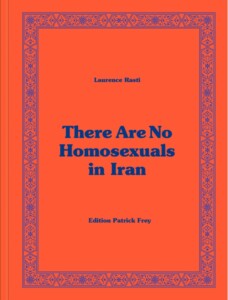
Hardcover/ 156 pages/ 190 × 250 mm
€ 52.00
In 2007, Iran’s president Mahmoud Ahmadinejad spoke at Columbia University and declared, “In Iran, we do not have homosexuals like in your country.” The president’s definitive statement is reflective of the state of things in Iran, where being actively gay carries a potential death sentence, imprisonment or corporal punishment. For the homosexuals of Iran, which do indeed exist despite Ahmadinejad’s pronouncement, survival comes at a cost: they have to leave their country, or transition or conceal their sexuality. Many flee to Denizli, a small town in Turkey, where they await asylum from countries where homosexuality is legal.
Over a few years, Swiss-born Iranian photographer Laurence Rasti (b. 1990) visited Denizli to meet with and photograph this community of Iran’s gay refugees, who have fled their home country in search of freedom from persecution and threats for their sexuality. Her book, There Are No Homosexuals in Iran, is a selection of her environmental portraits, with her sitters often made mysterious or concealed.The book is bright orange, with the title printed in purple and enclosed by a purple border, giving an impression reminiscent of motifs woven into Persian rugs. It begins with four interviews with her subjects, spread on orange paper in English, with the same in Farsi at the back side of the book. The interviewees are named but they aren’t linked to a face, and so, Rasti makes the political problem personal while also preserving the anonymous quality that runs through the book.
Rasti offers a sensitive documentation: she creates a narrative that is as poetic as it is indicative of a harsh reality. She photographs the Irani refugees in open spaces, posing them so that their faces are rarely in full view, obscuring their features by trees, shadows or hair. Even in Turkey where homosexuality is legal, homophobia runs deep, and anonymity and alertness is key to safety. The poses of Rasti’s portraits reveal an awkwardness, a self-consciousness that refuses to abate.
As one moves through the book, the artist begins to uncover a different side of their lives, one led behind closed doors. It is here that they begin to reveal and express themselves, whether it is in full makeup, or a casual embrace in pajamas. As viewers, we’re taken away from an isolating, uncomfortable space and invited into the beautiful, normal situations of people just being who they are.
By showing us the two opposing lives they lead, Rasti also makes clear the state of limbo experienced by the gay Iranians – the ones who do not exist, and yet do.
There Are No Homosexuals in Iran is available from Edition Patrick Frey.